The Impact of Client and Customer Labels on Marketing Strategy
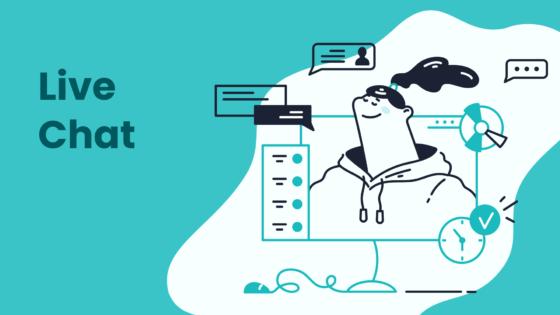
The words client and customer shape every business relationship and influence business strategy at its core. Companies like Sobot must understand the difference between client and customer to optimize contact and engagement. In fact, 78% of customers believe custom content shows a brand’s interest in relationships, while 89% are retained by omnichannel strategies. Sobot AI empowers businesses to tailor experiences and drive loyalty, reflecting how these labels impact outcomes across industries.
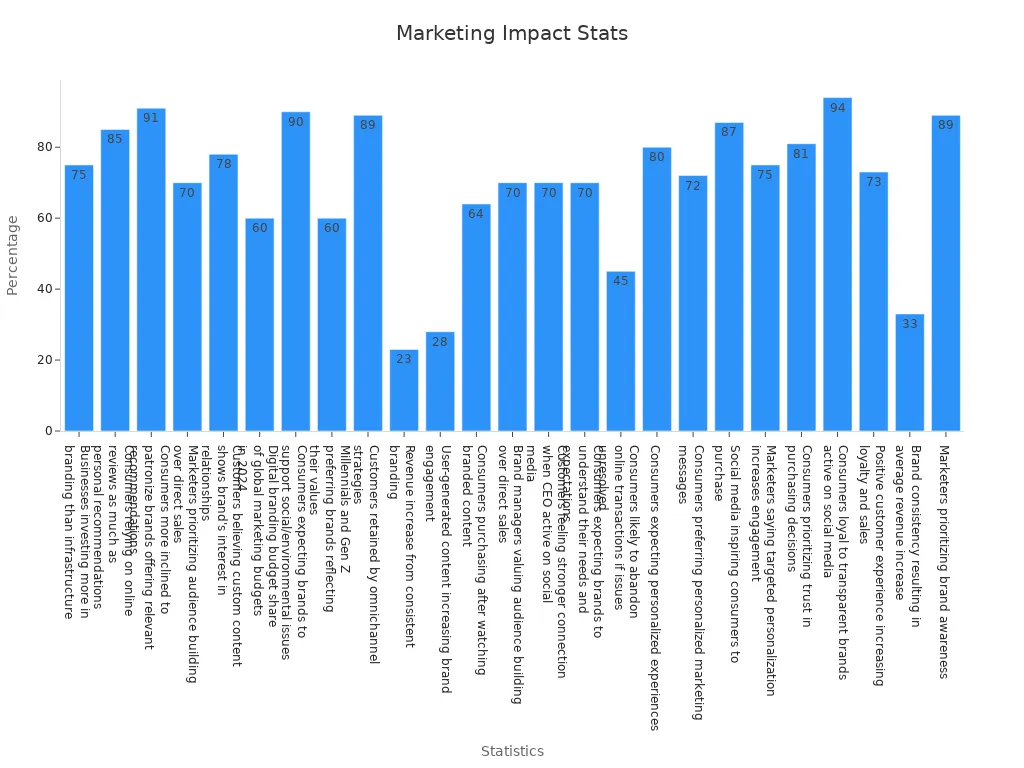
Client vs Customer: Key Concepts
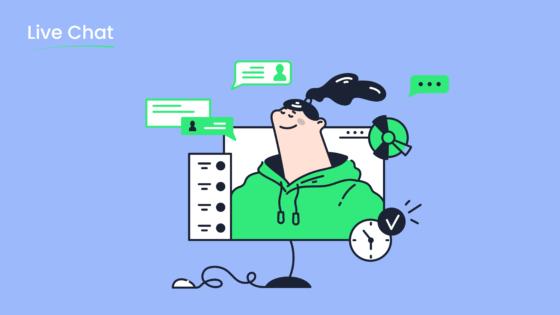
Definitions
The terms client and customer often appear in business, but they have different meanings. A customer usually buys a product or service in a single transaction. For example, someone who purchases a coffee from a shop is a customer. In contrast, a client receives ongoing services and support. A lawyer or consultant works with clients who expect personalized attention and long-term care. The difference between client and customer shapes how companies build their strategies. Businesses must understand the difference between clients and customers to deliver the right experience. In the client vs customer debate, the right label helps set expectations for both sides.
Relationship Focus
Clients expect an ongoing relationship with the business. They want personalized attention and regular updates. Customers, on the other hand, may only interact once or twice. Companies that serve clients focus on building trust and loyalty over time. For example, financial advisors treat their clients as partners, offering advice and support for years. Customers in retail settings may not expect this level of care. The difference between client and customer becomes clear in these interactions. Businesses that understand the difference between clients and customers can tailor their approach. This focus leads to better results and higher satisfaction.
Tip: Companies that provide personalized attention to clients see a 60% higher retention rate, according to Forbes.
Sobot’s Approach
Sobot recognizes the importance of both clients and customers. Its solutions support businesses that need to manage both types of relationships. Sobot Live Chat, for example, allows agents to deliver personalized attention to clients through real-time messaging and unified customer data. The platform also helps businesses handle high volumes of customers by automating responses and tracking every interaction. Sobot’s tools make it easy to maintain an ongoing relationship with clients while still serving customers efficiently. This approach bridges the gap in the client vs customer conversation and ensures every user receives the right level of care.
Difference Between Client and Customer in Marketing
Marketing Strategies
The difference between client and customer shapes how businesses design their marketing strategies. Companies often use targeted marketing campaigns to reach customers who make quick purchases. These campaigns focus on customer acquisition and encourage immediate action. For example, a retailer may send a discount code to customers through social media or SMS, hoping for a fast response.
Clients, however, expect more than a single transaction. They look for personalized attention and ongoing value. Businesses serving clients use strategies that build long-term relationships. They analyze client behavior, segment data, and create tailored offers that support client success. For instance, a food services company might study client purchase patterns and send weather-based notifications to increase order frequency, rather than offering discounts. This approach helps protect margins and supports client experience.
Omnichannel environments highlight the difference between clients and customers. JoJo Maman Bébé, a well-known retailer, rewards customers at every touchpoint with loyalty programs and engaging content. This customer-focused strategy creates seamless, rewarding experiences and boosts loyalty. In contrast, client-focused strategies prioritize business goals, such as increasing order frequency or protecting profit margins.
Note: Businesses that use data segmentation and channel targeting can personalize content for both clients and customers, improving engagement and driving growth.
Communication Styles
Communication styles also reflect the difference between clients and customers. Customers often prefer quick, clear messages that help them make decisions fast. Companies use simple language and direct offers in their communication with customers. This style supports customer acquisition and encourages repeat purchases.
Clients need more detailed and ongoing communication. They expect personalized attention and regular updates about their services or products. Businesses often assign dedicated account managers or use advanced tools to ensure clients receive timely responses. This approach builds trust and supports client success.
A table below shows the main differences in communication styles:
| Aspect | Customers | Clients |
|---|---|---|
| Message Length | Short and direct | Detailed and ongoing |
| Personalization | Limited | High |
| Frequency | As needed | Regular and scheduled |
| Focus | Immediate needs | Long-term goals and client experience |
Companies that understand the difference between clients and customers can adjust their communication style to fit each group. This leads to higher satisfaction and better results.
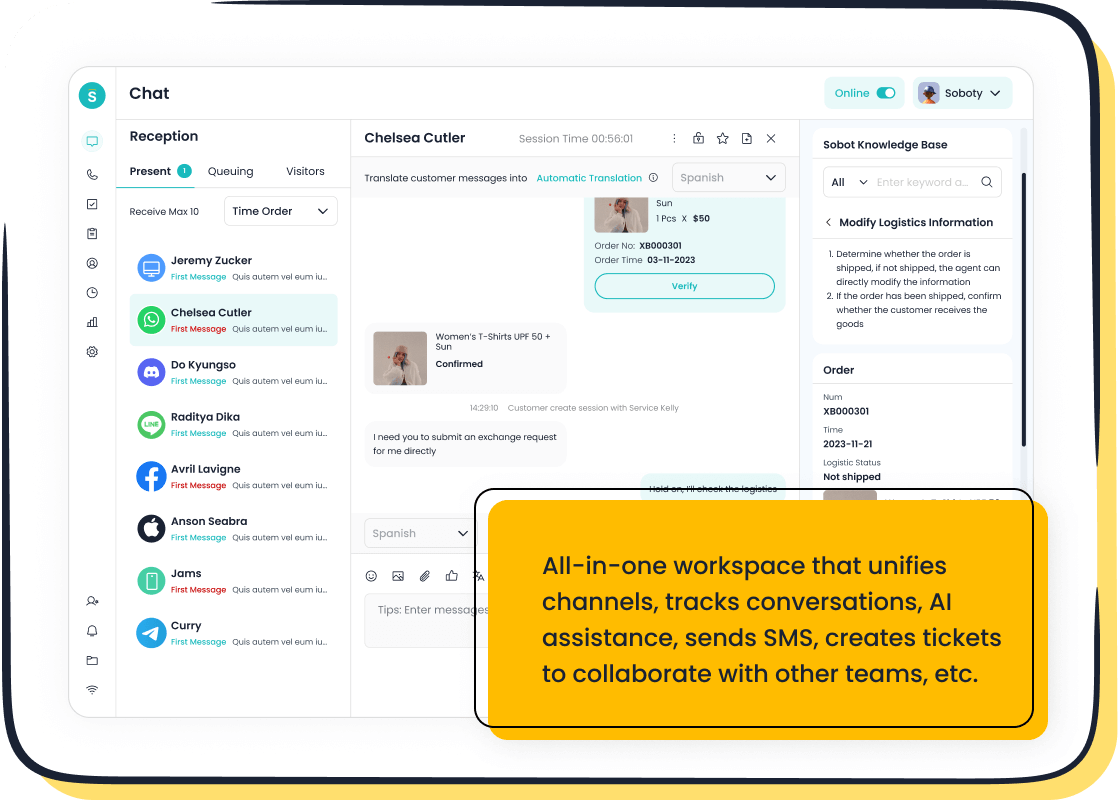
Sobot Live Chat Example
Sobot Live Chat provides a clear example of how marketing strategies differ for clients and customers. The platform supports omnichannel engagement, allowing businesses to connect with both groups on their preferred channels. Customers benefit from fast answers, with 63% preferring live chat for service. Most customers receive responses within two minutes, much faster than email or social media. This speed improves customer acquisition and satisfaction.
Clients receive personalized attention through unified customer data and AI-powered tools. Sobot Live Chat helps agents track every interaction, ensuring no detail is missed. Businesses can use built-in analytics to create targeted marketing campaigns for both clients and customers. This approach supports client success by providing tailored solutions and ongoing support.
- 86% of live chat interactions end with satisfied customers.
- Customers using live chat spend 60% more on purchases.
- Chatbot technology, including live chat, can increase sales by 67% and improve ROI for 57% of businesses.
- Adding live chat can improve website conversions by 12%.
Sobot’s omnichannel solution bridges the gap in the client vs customer debate. It enables businesses to deliver personalized attention to clients while efficiently managing high volumes of customers. This flexibility supports both relationship-focused and transactional approaches, making Sobot Live Chat a valuable tool for any business.
Key Differences Between Client and Customer in Customer Service
Service Models
Businesses use different service models to meet the needs of clients and customers. Clients often expect tailored services and support that focus on long-term success. Companies design service models for clients that include regular check-ins, proactive advice, and ongoing optimization. Customers, on the other hand, usually seek quick solutions to immediate problems. Service models for customers focus on fast response times and efficient issue resolution.
The table below highlights the main differences in service models:
| Service Model | Focus Area | Key Tools | Key Metrics |
|---|---|---|---|
| Customer Experience | Entire customer journey | CRM systems, A/B testing software, dynamic product recommendations | Customer Satisfaction Score (CSAT), Net Promoter Score (NPS), Customer Effort Score (CES), Customer Retention Rate |
| Customer Success | Post-purchase optimization, especially B2B | Overlaps with CX tools but focused on usage optimization and goal achievement | Customer Lifetime Value, Retention Rate, Churn Rate, Repeat Purchase Rate |
| Customer Service | Issue resolution and responsiveness | Self-service chatbots, web-based knowledge bases, multi-channel support access, proactive messaging | First Response Time (FRT), Average Resolution Time (ART), Issue Resolution Rate |
Clients benefit from service models that track their progress and help them reach their goals. Customers value models that solve their problems quickly and keep them satisfied. Companies that understand the key differences between client and customer can design better service experiences for both groups.
Support Channels
Support channels play a major role in shaping the experience for clients and customers. Clients often prefer dedicated channels, such as account managers or scheduled calls, to discuss their needs and receive updates. Customers usually want fast and convenient options like live chat, social media, or self-service portals.
Recent research shows several important trends:
- Customer service has a direct effect on long-term revenue.
- Providing excellent customer service requires offering a wide variety of support channels.
- Alternative support channels such as live chat, social media, mobile apps, SMS/text, and self-help options are increasingly popular and essential to meet customer expectations.
- Effective customer service depends on coordinating multiple service channels.
- Customer expectations for service channels are evolving, particularly among Millennials.
Clients expect a personal touch and ongoing communication. Customers want quick answers and easy access to help. Companies that offer multiple support channels can meet the needs of both groups and improve satisfaction.
Sobot Omnichannel Solution
Sobot provides an omnichannel solution that supports both clients and customers. The platform brings together all communication channels, including live chat, voice, email, WhatsApp, and social media. Agents can view every interaction in a unified workspace, making it easy to deliver tailored services and support.
Clients receive personalized attention through dedicated account management and proactive outreach. Sobot’s AI-powered tools help agents track client goals and provide timely updates. Customers benefit from instant responses through live chat, chatbots, and self-service options. Sobot’s system ensures no message gets missed, and every customer receives the right level of care.
Sobot’s analytics help businesses measure key metrics like CSAT, NPS, and retention rates. Companies can use these insights to improve service models and support channels for both clients and customers. Opay, a leading financial service platform, improved its customer satisfaction from 60% to 90% after adopting Sobot’s omnichannel solution. This example shows how the right tools can drive better outcomes for all users.
Tip: Companies that use omnichannel solutions like Sobot can increase customer retention and lifetime value by meeting the unique needs of both clients and customers.
Impact on Customer Experience and Retention
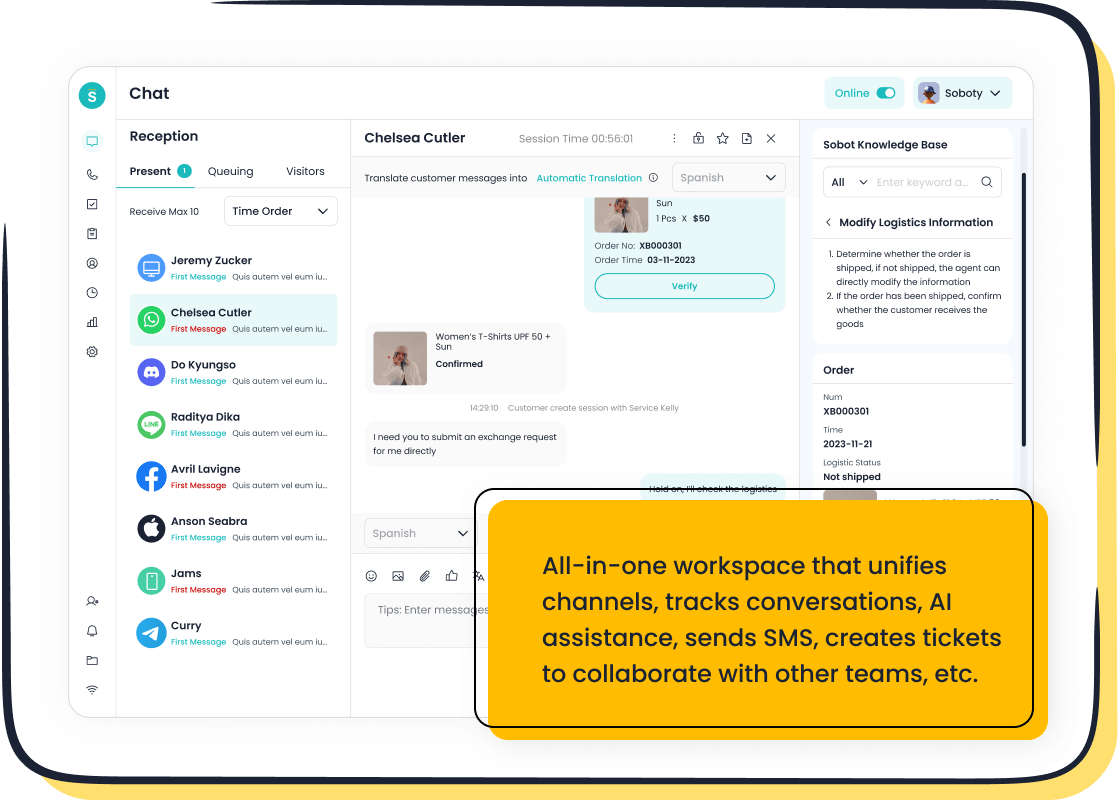
Loyalty Building
Businesses that focus on building long-term relationships see stronger customer loyalty. Accurate labeling of clients and customers allows companies to personalize their approach. This leads to better customer experience and deeper engagement. When businesses use unified contact solutions like Sobot, they can track every interaction and provide consistent service. This helps create an ongoing relationship that customers value.
A variety of metrics help measure loyalty and retention. The table below summarizes key indicators:
| Metric Name | Description & Role in Loyalty and Retention |
|---|---|
| Customer Lifetime Value (CLV) | Measures the projected profitability of customers, helping identify which labeled segments are worth investing in for loyalty programs. |
| Patronage Ratio | Compares stores available vs. stores patronized, indicating customer loyalty patterns though limited in showing changes over time. |
| Enis-Paul Index | Quantifies customer loyalty on a 0-100% scale based on patronage and spending concentration, reflecting switching behavior. |
| Switching Ratio | Tracks frequency of customers switching to competitors; lower ratios indicate higher loyalty. |
| Budget Ratio (Share of Wallet) | Shows the proportion of a customer's total category spending allocated to your brand, indicating loyalty depth. |
| Net Promoter Score (NPS) | Measures customer willingness to recommend the brand, reflecting satisfaction and loyalty. |
| Retention Rate | Percentage of customers retained over time, directly showing loyalty program success. |
| Churn Rate | Rate at which customers leave, inversely related to retention and loyalty. |
Companies that segment their audience can target loyalty programs and reactivation campaigns more effectively. This approach supports client success and helps maintain a long-term relationship.
Retention Strategies
Retention strategies depend on understanding the difference between clients and customers. Businesses that invest in building long-term relationships often use personalized offers, proactive support, and regular check-ins. Sobot’s omnichannel platform enables agents to deliver these strategies by unifying all customer data and communication channels. This unified view helps agents respond quickly and tailor their approach for each segment.
Personalized engagement, such as sending targeted messages or offering exclusive rewards, encourages an ongoing relationship. Companies that use these methods see higher retention rates and improved client success. Regular feedback collection and satisfaction surveys also help businesses adjust their services to meet changing needs.
Note: Companies that use unified contact solutions can reduce churn and increase retention by meeting the unique needs of both clients and customers.
Sobot Customer Story: Opay
Opay, a leading financial service platform, partnered with Sobot to improve its customer experience and retention. Opay faced challenges managing high volumes of interactions across multiple channels. After implementing Sobot’s omnichannel solution, Opay unified its communication through social media, email, and voice. This change allowed Opay to build an ongoing relationship with users and deliver consistent service.
The results were clear. Opay’s customer satisfaction rate increased from 60% to 90%. The company also reduced costs by 20% and saw a 17% rise in conversion rates. By using Sobot’s tools, Opay supported client success and strengthened its long-term relationship with customers. This example shows how the right label and unified contact solutions can drive loyalty and long-term value.
Choosing the Right Label for Your Business
Industry Considerations
Selecting the right label—clients or customers—depends on the industry and the nature of the relationship. Many industries, such as consulting and legal services, rely on clients who expect personalized services and ongoing support. These businesses benefit from a relationship-driven approach. Retailers and e-commerce companies, on the other hand, often serve customers who seek quick, transactional experiences. Real estate firms may work with both, offering tailored solutions to clients while also handling transactional sales with customers.
- Consulting firms maintain long-term relationships with clients, focusing on trust and ongoing value.
- Retail stores engage customers in fast, efficient transactions.
- Real estate blends both models, providing personalized services to clients and transactional support to customers.
Industry research highlights that choosing the correct label improves marketing effectiveness. Businesses align their strategies with the expectations of clients or customers, leading to better engagement and loyalty. Mailchimp emphasizes that targeted communication and segmentation tools help manage these relationships effectively (source).
Implementation Steps
Businesses can follow clear steps to implement the right label in their business strategy:
- Analyze the business model to determine if the focus is on long-term relationships or quick transactions.
- Segment the audience based on expectations—clients need ongoing support, while customers seek efficiency.
- Train teams to adopt a customer-focused mindset or a client-centric approach, depending on the segment.
- Use technology, such as Sobot’s omnichannel platform, to unify communication and deliver personalized services.
- Monitor engagement and satisfaction metrics to refine the approach.
Tip: Companies that use unified platforms like Sobot can streamline customer acquisition and improve retention by delivering the right experience to both clients and customers.
Common Mistakes
Businesses sometimes make errors when labeling clients and customers. These mistakes can reduce engagement and hurt loyalty.
| Mistake | Impact |
|---|---|
| Using the wrong label | Confuses the audience and weakens marketing messages |
| Ignoring relationship expectations | Leads to poor service and missed opportunities |
| Failing to personalize communication | Reduces satisfaction for clients and customers |
| Overlooking best practices for dealing with clients and customers | Limits growth and retention potential |
Companies should avoid these pitfalls by understanding the differences between clients and customers. Adopting best practices for dealing with clients and customers ensures that every interaction supports business goals and builds loyalty.
Businesses that understand the difference between client and customer can shape a stronger marketing strategy. Sobot’s solutions help companies deliver the right experience for each group. The table below shows how Sobot’s tools improve results:
| Metric / Customer | Quantitative Evidence |
|---|---|
| Return on Investment | 234% ROI |
| Agent Workload Reduction | 60% reduction due to AI Copilot |
| Conversion Rate Increase | 15% increase |
| Net Promoter Score (NPS) | 35% improvement |
| Samsung | 97% Customer Satisfaction (CSAT) |
| OPPO | 93% Customer Satisfaction (CSAT) |
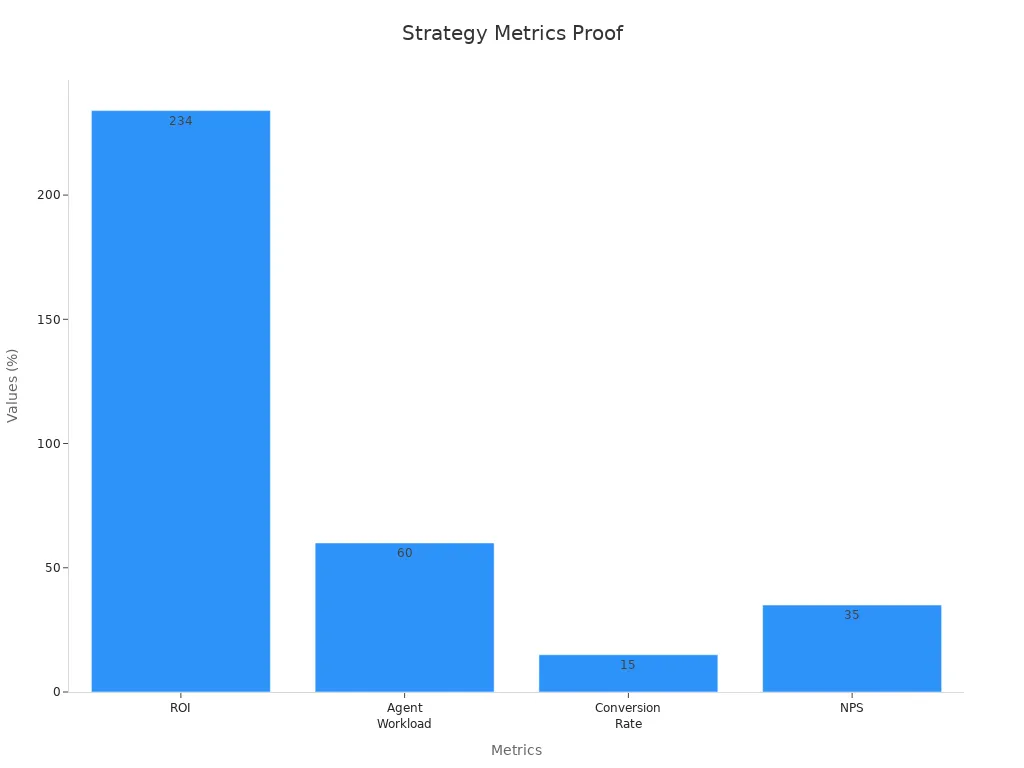
Companies should review their client and customer engagement strategies. Sobot Live Chat and marketing solutions support unified contact, faster service, and higher satisfaction. Explore Sobot’s platform to optimize every client and customer relationship for better business outcomes.
FAQ
What is the main difference between a client and a customer?
A client expects ongoing support and personalized service. A customer usually completes single transactions. This difference shapes the marketing strategy and customer contact approach for every business, including those using Sobot’s solutions.
How does Sobot help businesses manage both clients and customers?
Sobot provides an all-in-one contact center. It unifies customer contact across channels. Businesses can deliver fast responses to customers and personalized attention to clients. Sobot’s Live Chat and marketing strategy tools support both relationship types.
Why does the label matter in marketing strategy?
The label guides how companies design their marketing strategy. Businesses use different communication styles and customer contact methods for clients and customers. Sobot’s analytics show that tailored approaches improve satisfaction and retention rates.
Can Sobot’s platform improve customer contact for any industry?
Yes. Sobot supports industries like retail, finance, and education. Its omnichannel platform adapts to both client and customer needs. For example, Opay improved its customer satisfaction by 30% after using Sobot’s unified customer contact solution.
What data supports the use of omnichannel customer contact?
Research shows that 89% of customers stay loyal to brands with omnichannel customer contact (source). Sobot’s platform helps businesses achieve this by integrating every channel into one workspace, boosting marketing strategy results.
See Also
Comparing The Leading Voice Of Customer Solutions
A Comprehensive Guide To Call Center QMS Fundamentals
Genesis And Genesys Call Centers Compared For Quality
